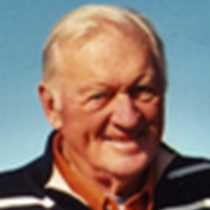Hell’s Canyon & Clearwater River
Today, framed by blue sky and mild weather, guests and staff left the Sea Bird to spend the day exploring nature and following the path of Lewis & Clark. In the morning one contingent boarded a motor coach aimed at the Idaho Panhandle, sight of more Corps of Discovery campsites than any state in the union. The other group boarded jet boats headed for the wonders of the Snake River Hell’s Canyon.
A local guide took guests in tow, narrating, guiding and “discovering” Lewis & Clark campsites. In 1805, the Bitterroot Mountains, Weippe Prairie and Clearwater River (Idaho) saw the Corps struggling through snowdrifts and hunger pangs as it headed west. At this point the Nez Perce people, known as Nimiipu (“the people”) helped feed the party (dried salmon and camas roots), provide it with westerly directions, and build dugouts for its journey to the sea. Our guide encouraged guests to virtually walk in the Corps’ footsteps, campsite to campsite, describing passes, creeks, prairies and rivers marking the westward journey. Lunch was provided at an historic building in the quaint town of Kamiah, Idaho.
Other guests roared off in a different direction. The jet boat captain circled slack water at the confluence of the Snake and Clearwater rivers, narrating shards of Lewiston, Idaho and Clarkston, Washington history. Jet boat guests also saw a small flotilla of sports fishers covering their bets by lingering at the confluence of the Clearwater and Snake rivers in search of sea-going trout – the steelhead. In fact, the Snake River, from Clarkston to the Salmon River, was crowded with fishers along the banks, aboard motorboats, and wearing chest-high waders in waters near sandbanks. Large fish were proudly held high from craft after craft as the jet boat meandered southward.
Besides the fighting steelhead, a small herd of Bighorn sheep grazed on the river’s east bank. Mule deer were everywhere, showing off their protruding ears and white rumps. Wedges of Canada geese flew overhead while their brothers and sisters paddled in moving water. Coots and other winged friends came and went. After lunch at a riverside fishing lodge the jet boat captain nudged up to smooth-surfaced rocks holding ancient petroglyphs and pictographs.
Late in the day both parties met at the Nez Perce Interpretive Center where a welcome was provided by rangers, followed by a brief tour of some of the oldest Nez Perce artifacts and costumes in existence.
Today, framed by blue sky and mild weather, guests and staff left the Sea Bird to spend the day exploring nature and following the path of Lewis & Clark. In the morning one contingent boarded a motor coach aimed at the Idaho Panhandle, sight of more Corps of Discovery campsites than any state in the union. The other group boarded jet boats headed for the wonders of the Snake River Hell’s Canyon.
A local guide took guests in tow, narrating, guiding and “discovering” Lewis & Clark campsites. In 1805, the Bitterroot Mountains, Weippe Prairie and Clearwater River (Idaho) saw the Corps struggling through snowdrifts and hunger pangs as it headed west. At this point the Nez Perce people, known as Nimiipu (“the people”) helped feed the party (dried salmon and camas roots), provide it with westerly directions, and build dugouts for its journey to the sea. Our guide encouraged guests to virtually walk in the Corps’ footsteps, campsite to campsite, describing passes, creeks, prairies and rivers marking the westward journey. Lunch was provided at an historic building in the quaint town of Kamiah, Idaho.
Other guests roared off in a different direction. The jet boat captain circled slack water at the confluence of the Snake and Clearwater rivers, narrating shards of Lewiston, Idaho and Clarkston, Washington history. Jet boat guests also saw a small flotilla of sports fishers covering their bets by lingering at the confluence of the Clearwater and Snake rivers in search of sea-going trout – the steelhead. In fact, the Snake River, from Clarkston to the Salmon River, was crowded with fishers along the banks, aboard motorboats, and wearing chest-high waders in waters near sandbanks. Large fish were proudly held high from craft after craft as the jet boat meandered southward.
Besides the fighting steelhead, a small herd of Bighorn sheep grazed on the river’s east bank. Mule deer were everywhere, showing off their protruding ears and white rumps. Wedges of Canada geese flew overhead while their brothers and sisters paddled in moving water. Coots and other winged friends came and went. After lunch at a riverside fishing lodge the jet boat captain nudged up to smooth-surfaced rocks holding ancient petroglyphs and pictographs.
Late in the day both parties met at the Nez Perce Interpretive Center where a welcome was provided by rangers, followed by a brief tour of some of the oldest Nez Perce artifacts and costumes in existence.




